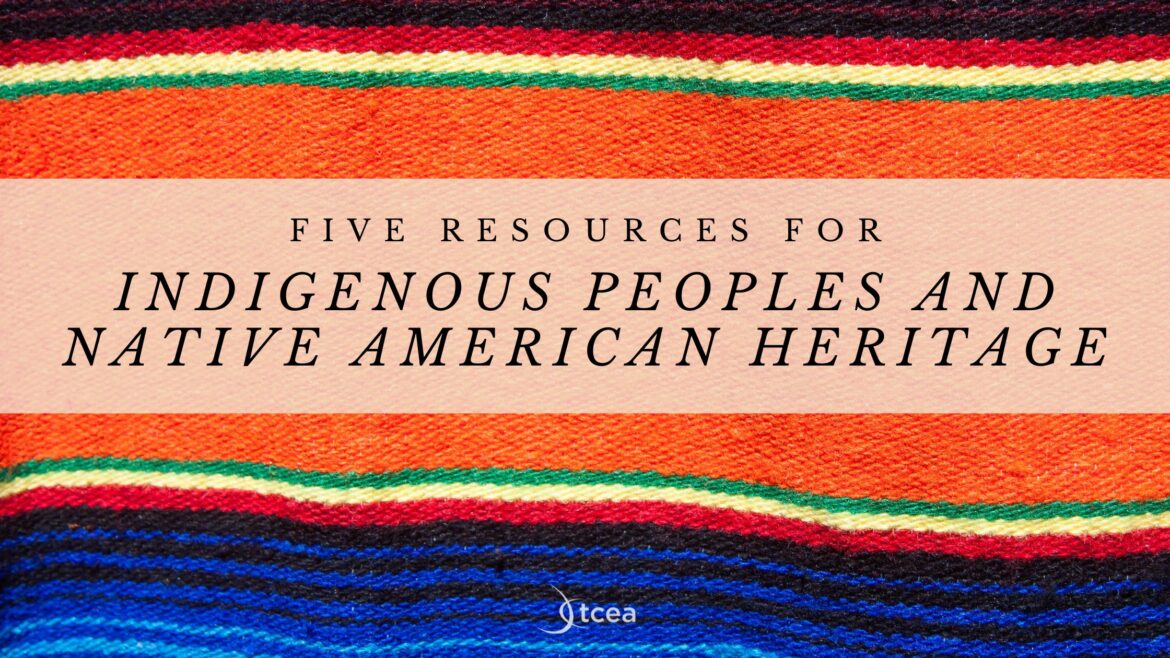Looking for free lessons and activities for your students? Let’s explore five sources of content– including lessons, books, Google Earth, and podcasts. You can adapt these resources for several purposes. The focus of the resources is on Indigenous peoples and Native American Heritage. Rediscovering our history and exploring native perspectives can provide powerful insights. One place to start learning is the National Museum of the American Indian.
Note: In writing this, I realize how ignorant I am in spite of my efforts. I invite those of you who know more to share what amazing resources may be missing in the comments. Let’s learn together.
#1: Indigenous Peoples Day Lessons and Activities
Indigenous Peoples Day includes a rich collection of lessons. You can use the content here for Native American Heritage Month (month of November).
TechLearning.com offers a list of lessons and activities; here are two that caught my eye from their list:
a) Celebrating Indigenous Languages. Use Google Earth to explore how indigenous languages are being kept alive. When you visit the website, you will find a digital homage to at-risk languages. On the website, they share:
Indigenous communities around the globe are working to preserve and revitalize their languages. They teach them to future generations and share them with non-Indigenous speakers. You will find indigenous traditional greetings, favorite sayings and meaningful songs.
b) Indigenous Peoples’ Day Resources. This website offers lessons, books, and films. The goal is to share what happened when Christopher Columbus invaded indigenous lands. Lessons focus on:
- Critical analysis of the textbook version of Columbus’ discovery
- Role-playing a trial of Columbus’ genocide of the Tainos people in the late 15th century
- Analysis of President Andrew Jackson’s speeches relevant to the Trail of Tears
Current events are also included, such as the Dakota Access Pipeline. These lessons offer a powerful counterpoint to dominant cultural perspectives. They serve as a great way to engage students in problem-based learning (PBL). What’s more, students can develop critical thinking skills as they analyze past policies.
You can also find author interviews and booklists via the Colorin Colorado website.

#2: Teaching for Change
As a native Panamanian and American of Swedish descent, I undertook a quick inventory. The inventory wasn’t of my possessions, but rather, my history and cultural roots. Even though I grew up in Central America, I know very little about its history. Many children who grow up in the United States should learn the history of Central America. They also may be curious, as I am, about their heritage.
Teaching Central America offers this point:
More than four million Central Americans live in the United States today. The lack of school resources on Central American heritage make its history invisible. Central America is too-often portrayed as a strip of land on a map connecting North and South America. There is a scarcity of literature in the school libraries.
To address the dearth of resources on history and literature, you can find more online now. Teachers can find “free downloadable lessons, bios, poetry, and prose.” You can test your knowledge of Central America with a short quiz (I scored 1 correct out of 5).
Did You Know?
Microsoft has an Indigenous theme for its Edge browser. You can find Google Chrome browser themes that have a Native American look to them appear online.
The website offers a few free books for students, including:
- Wilfredo: Un Nino de El Salvador (45 pages, free)
- Beauty and Eco-Relationships in the Natural World of Central America
- Leaving Home: Socratic Dialogue with Art
- Geography is History: Locate the Countries of Central America
- Rediscovering America
Although these are for elementary level students, there are others for older students. This site offers some fantastic content.
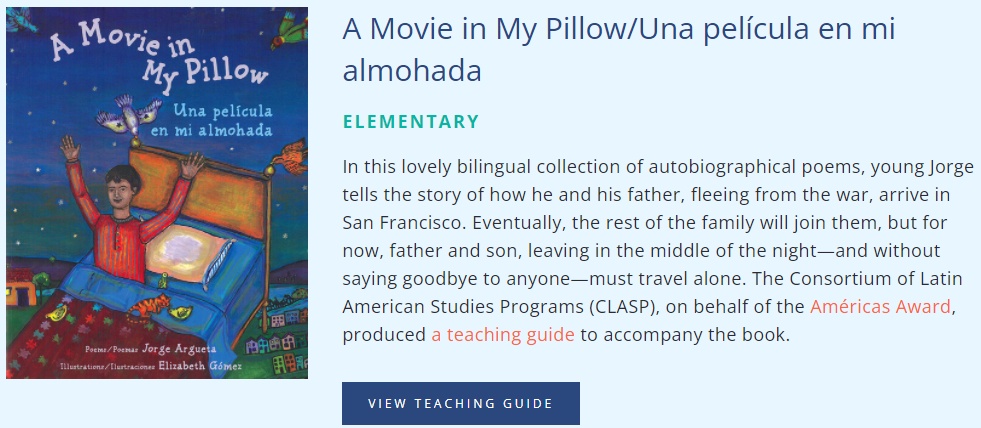
#3: University of Connecticut
Need to deepen your knowledge of African American/Black and Puerto Rican/Latino history? Consider the resources the University of Connecticut offers as one source. Their online curriculum offers an African American/Black and Puerto Rican/Latino studies course. The content has five units featuring:
- Early Beginnings
- Blood and Beauty
- Sweat
- Resistance
- Where Are We Now
Each unit is replete with readings, primary sources, historical fiction, films, and activities. The historiographies cover quite a bit of ground, including web and journal articles. You will find quotes like this one from Jayline Hernandez Gomez:
“Although I come from an uneducated family background, my parents are not the ones who failed to educate me,” Hernandez Gomez read during a three-minute public comment. “My history classes failed me.” (Source)
With websites like this one, you get a sense of the scope of what’s left to learn about history. One drawback to the site is that it relies on published books, so you may find yourself paying out of pocket.

#4: A Google Slides Template
Check out this Native American Heritage focused, Google Slides template. Developed by Google for Education, it offers a wide variety of slides and activities. For example, you will find links to make a copy of Google Slides templates for:
- Native American Heritage Month Activity (requires Google account)
- World Kindness Day Compliment Chain
These two templates are simple and meant for children to use. Students customize the compliment chain:
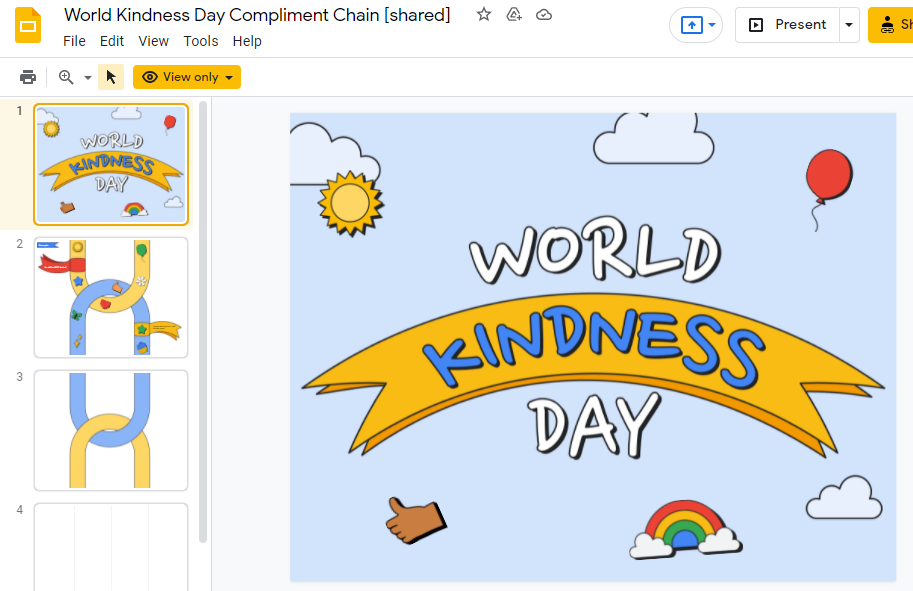
In addition, Google Arts and Culture has released a massive Indigenous Americas collection. Some of the things you will find in it include:
- Ten Ways to Celebrate Native American Heritage
- Honoring Nations: Successes in Self-Governance
- Healing through Tradition
And there’s much more– like sixty-five years of Navajo history through music.
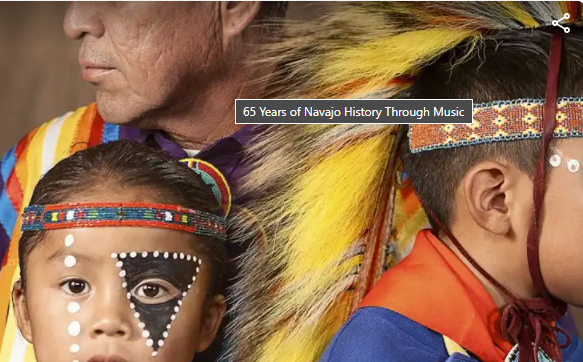
#5: The Clio
The Clio makes it easy to explore history. Among the walking and virtual tours, you will find a focus on Native American History. For example, you can find walking tours for the Crow, the Nez Perce War of 1877, and the Native American Museum. There are others, of course.
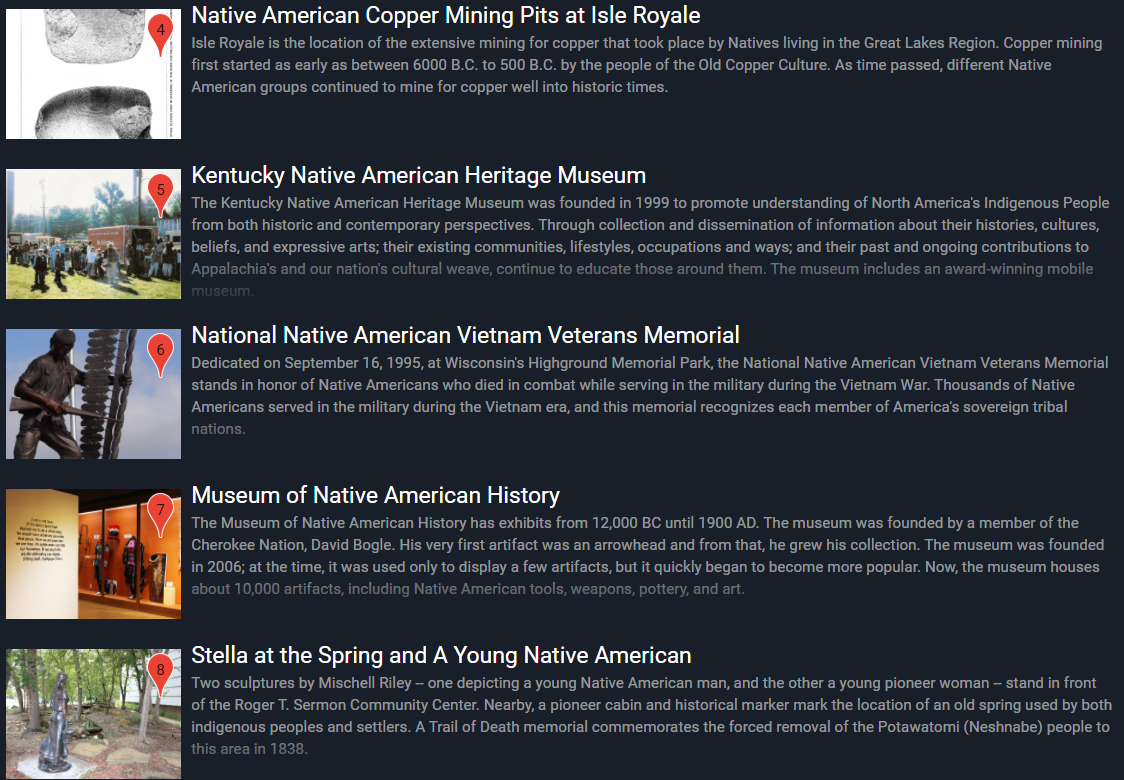
Having grown up reading Donald Clayton Porter’s historical fiction, which had an interesting take on early colonial conflict with First Nations, I found Clio’s content enlightening. The site provides some real history to explore in pictures, audio, and video.
Additional Resources
If you’re like me, you love to read and listen to others. Allow me to share a few sources of both.
No doubt, you’ve read your share of “white Indian” stories. That is, children adopted or stolen from American settlers, then raised by Indigenous peoples. One of the books in my school library included Conrad Richter’s “The Light in the Forest.” I still remember my negative reaction, but curiosity spurred me on. Since then, I found many better stories.
Learn more about the We Are Water Protectors
You may find this collection of kid-friendly books better fare than those two authors. It’s important to keep in mind that…
Only 1% of the children’s books published in the U.S. in 2016 featured Indigenous characters, and even fewer (1/4 of the 1% = 8 books total) were written by Indigenous authors. (source)
Explore more titles via Strong Nations, an indigenous book publisher and seller. Debbie Reese shares more books of interest. You may gain a deeper appreciation for cultures lost and at-risk, as well as why they became so.
Finally, listen to these three podcasts for children:
Intended for younger children, they have a common goal of celebrating indigenous stories. Educators may also find this Kidlit These Days episode of interest, Episode 13: An Indigenous Peoples’ History.
Deepen Your Awareness of History
Don’t be afraid to explore and deepen your knowledge. There’s so much to learn and share about Indigenous peoples and Native Americans. Why not start with this collection of children’s books?
Feature Image Source
Screenshot by author

